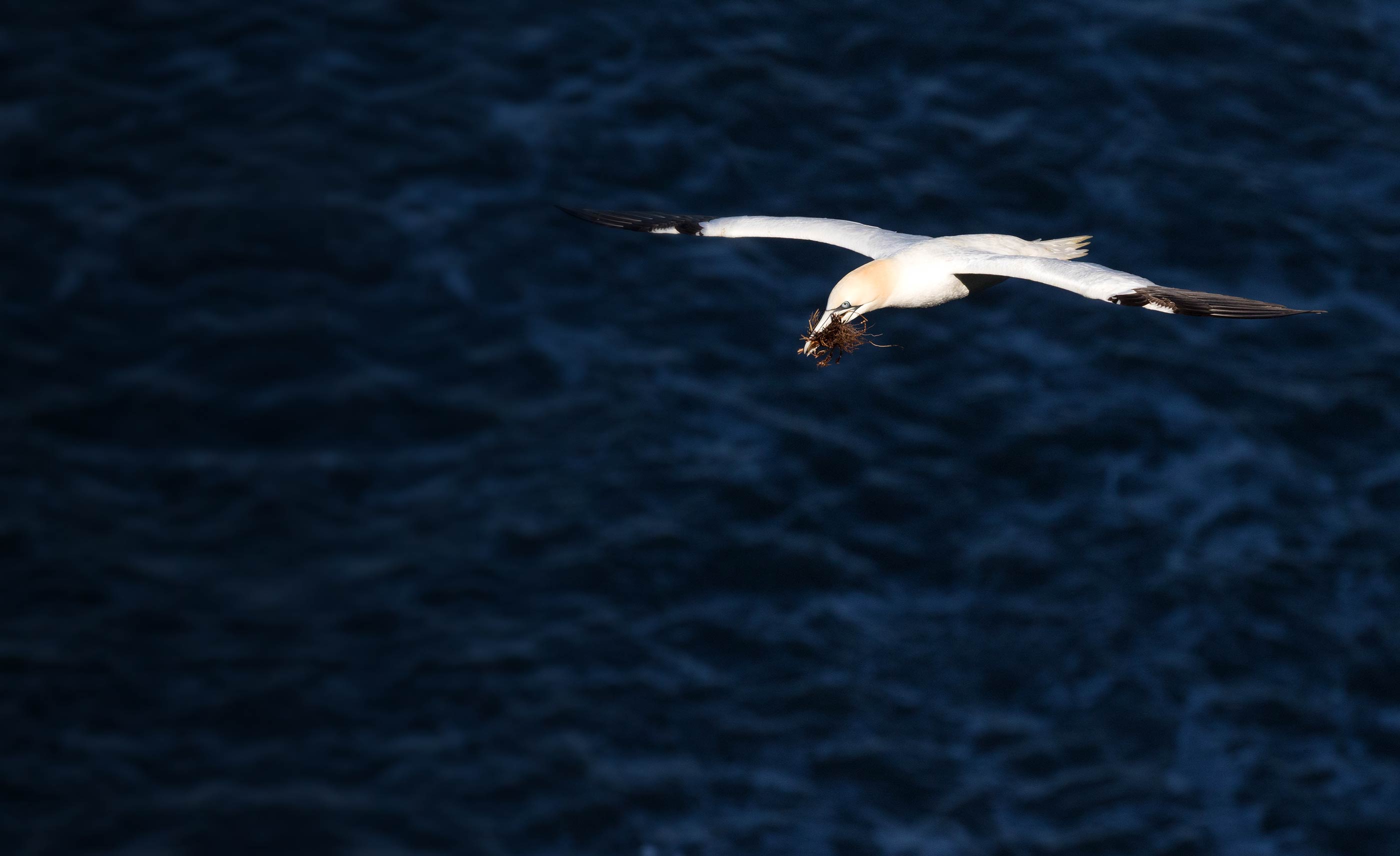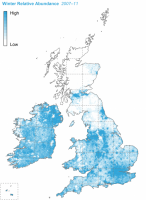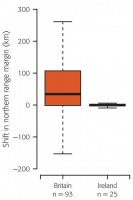Research
The dataset of Bird Atlas 2007–11, along with similar information from the previous Britain & Ireland atlases, provide a wealth of data for tackling many ecological questions of applied and theoretical natures. Previous research using atlas data have tackled some pressing conservation questions and led to a wealth scientific literature . BTO scientists have an in-depth understanding of the strengths and limitations of these data and will be leading much of the next phase of research but also working collaboratively with other academics and conservationists.
Upland birds
One of the strong themes emerging from the Bird Atlas is that many of our specialist upland species are undergoing marked range contractions and population declines. Species as diverse as Whinchat, Ring Ouzel, Short-eared Owl and Curlew are among those showing the greatest losses. By relating the patterns of occupancy, abundance and change to detailed information on the upland environment, we hope to be able to identify key factors responsible for these declines. This work will undoubtedly involve other researchers with specialist knowledge of key species, or fine-scale data on individual territories for example, but its scale of coverage means that data from the Atlas have a major role to play.
Urban birds
We know that gardens are important for many bird species, but it is equally clear that not all species thrive in the hearts of our towns and cities. But what is it about our urban areas that exclude certain species? Are all cities equally good or bad for birds, or can we identify and learn from those that offer that little bit extra? The incredible intensity of coverage by Timed Tetrad Visits during 2007–11 means that for large parts of southern and northwest England, north Wales and southeast Scotland we have high-resolution data on the abundance and distribution of species that can be related to information on each tetrad’s environment, such as its position upon a gradient from entirely rural to entirely urban, the type of green spaces present, the quality of housing and gardens and so on. Ultimately, this research will enable us to make evidence-based recommendations for improved management of urban areas for wild birds.
A graph from the Atlas (p138) showing distances by which the
northern range margin of southerly distributed species
has shifted in the last 40 years.
(click to enlarge)
Climate change impacts
Readers of the Atlas will see some clear examples of species that have shown pronounced extensions of their breeding or wintering ranges. Think of the Buzzard and Raven that have spread eastwards, and the Nuthatch and Reed Warbler that have spread northwards. Meanwhile, Corn Buntings seem to be collapsing into the English midlands, and Turtle Doves to southeast England. These changes, when analysed across species groups, can help us to weigh up the relative importance of different components of environmental change in driving these patterns of biodiversity change. Climate change may be one of the important challenges facing bird populations globally and 40 years of atlas data offer us an excellent opportunity to measure how birds have responded.
Find out more about our Beyond the maps appeal and make a donation today.








Share this page